Dissidia Final Fantasy Opera Omnia or Dissidia Final Fantasy OO is the mobile version of Square Enix’ famous Final Fantasy fighting series. It was released on Android and iOS yesterday, January 31, 2018. The game pays homage to the series by combining various aspects of previous iterations. One can almost say that it’s a mixture of the current and old generation Dissidia titles. It was also very surprising that Square Enix released the game right after the launch of Dissidia Final Fantasy NT, the latest installment of the franchise. It was the right move though to draw in fans at the mobile scene, especially those without the consoles to play NT with.
As fans of the series, we were quite interested in how the game works, so we gave it a little spin. Check out our initial thoughts below.
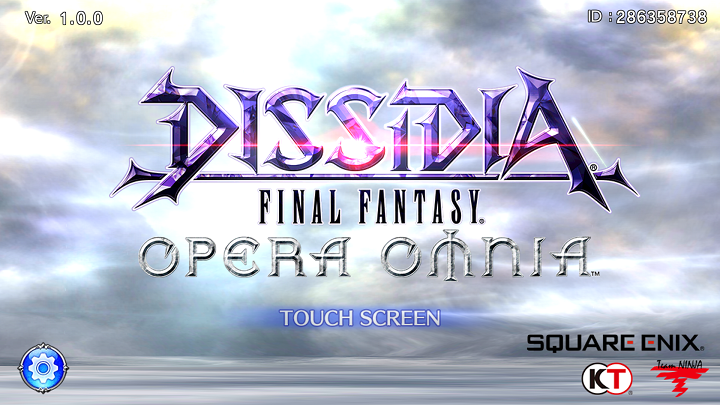
Dissidia Final Fantasy OO takes us back to the whole evil versus good story setting that we’re all too familiar with but with a new twist. Torsions, dark portals that spew evil beings, began to appear around the world bringing with it unspeakable terror. In order to combat this darkness Mog, the guardian spirit of the world, awakened and was tasked with the duty of finding heroes to combat the darkness.

Being on a mobile platform means that the game doesn’t have the flashier graphical art style of its console counterparts. Instead, the UI is in a mobile-friendly state and the characters are in chibi-esque form — that isn’t to say that the graphics are bad, it actually feels and looks refreshing. Not only that, it isn’t that heavy to warrant a strong system so users with less powerful hardware are not left out.
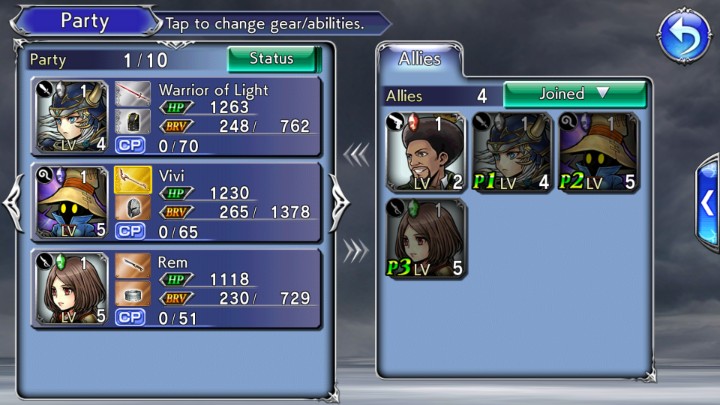
At the beginning of the game, players are given control of three characters from the Final Fantasy universe — Warrior of Light from FF 1, Vivi from FF IX, and Rem from FF Type-0. This will be their initial party of three, which they can later customize as they progress through the story.
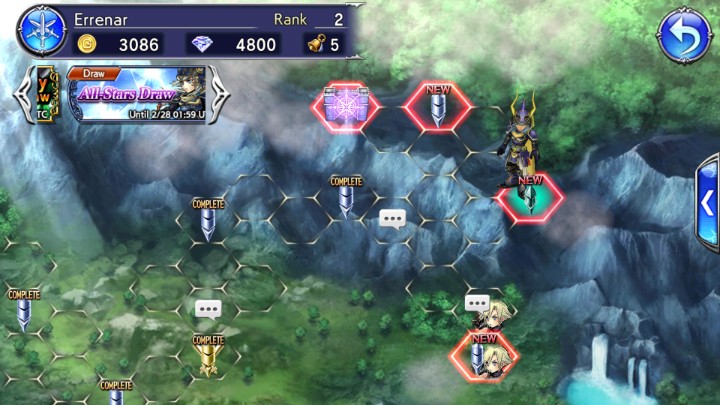
Moving on to the gameplay, as mentioned earlier, Dissidia Final Fantasy OO combines the mechanics of previous and current generation Dissidia titles but with its own little system. Questing is split into two parts — Map navigation and Combat. During map navigation, players walk around a hexagonally laid out terrain much like the format of the first generation Dissidia.
What’s interesting to note here is that to continue to the next portion of the map, players would have to complete tasks and open up a gateway. This is the same gateway mechanic that was first introduced in Dissidia 012: Duodecim. These tasks vary in nature, from fighting enemies to recruiting new allies.
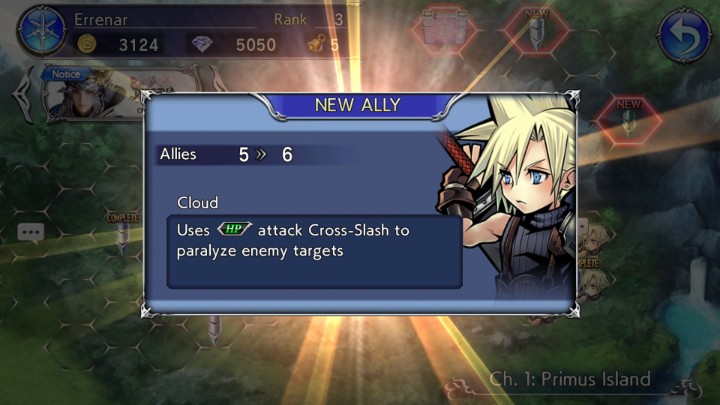
Speaking of recruiting new allies, the game has 25 story characters taken from the Final Fantasy universe. As players traverse through the story chapters they will encounter these characters. Each character has their own cutscene which is split into three — Introduction, Combat, and Recruitment. After which, players will now be able to put the character into their party.
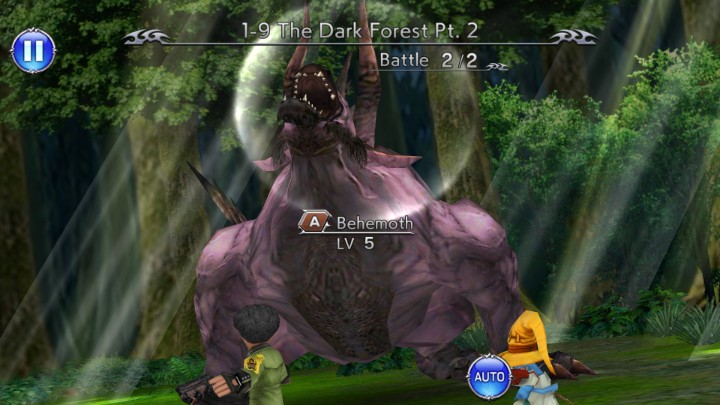
Quests are generally combat scenarios where players have to take out certain waves of enemies. Apart from the main quests, depicted by silver and gold enemy symbols, players can take on optional quests which are represented by green enemy symbols. These quests also have optional victory conditions that hand out additional rewards which are kind of the norm in most mobile games nowadays. Before a battle starts, players are given the option of customizing their party which consists of three characters.

Combat is your basic turn-based affair where players and enemies take turns bashing each other. The game does add in the series’ well-known “Bravery” system into the mix. Basically, attacks are split into two types, Bravery and HP. To reduce an enemy’s HP (Hit points), players must build up their character’s bravery metric through bravery attacks.

Bravery attacks don’t directly damage the opponents HP but are used to increase power and to lower the opponent’s damage output (Opponents hit with a bravery attack will lose bravery). If a character or enemy’s bravery reaches zero, they’ll enter a “break” state. While in this state, HP attacks deal no damage. Players can also break enemies in order to cancel their channeling attacks or simply to avoid damage. Apart from this whenever an opponent breaks, bonus bravery, is given to the player’s party.
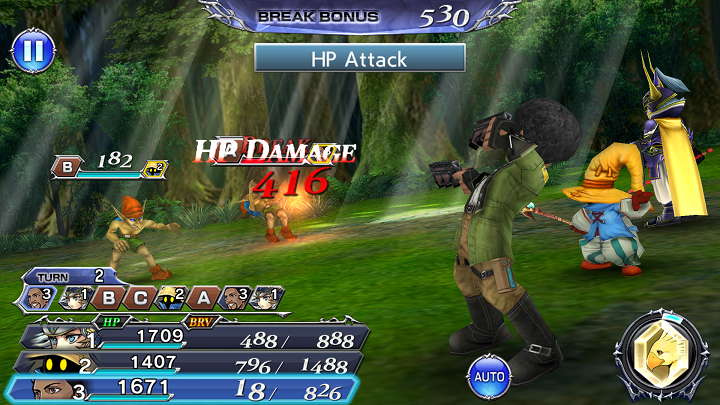
HP attacks, on the other hand, uses a character or enemy’s stored bravery to damage their opponent’s HP directly. Another added dynamic in combat is chain attacks. When an enemy is repeatedly hit by the player, they will receive the “knockback” status. The next character to hit the enemy will start a chain reaction, enabling other characters to also attack the enemy.

Combat is a little confusing at first and obviously a bit odd for a turn-based game but it surprisingly blends well with the gameplay. It also prompts players to strategically think whether to build-up bravery or just straight up whack the enemy.
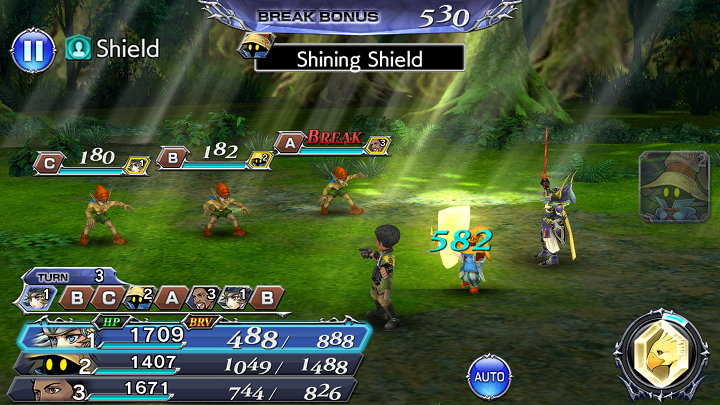
Other than these basic attacks, characters also have access to certain skills and spells. Some of which are divided into the bravery or HP category. The game also makes use of Final Fantasy’s famed summoning system, where players can enlist the help of various iconic creatures and summons of the series.
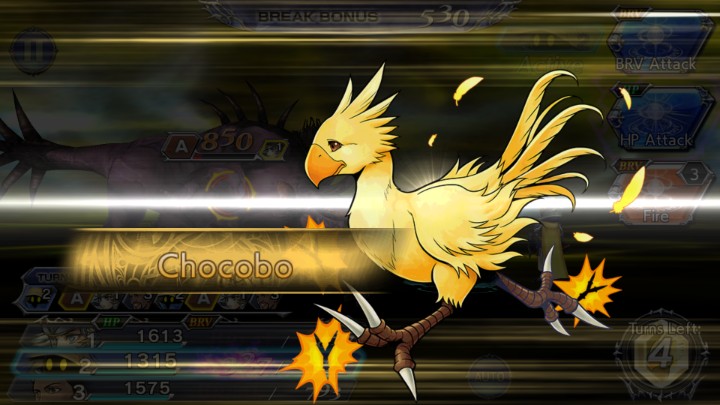
These summons can aid the player in a number of ways from increasing their total Bravery to adding elements to their attacks. Although they can only be used once per battle and have charge times. Either way, they add more flavor to battles and is an added boost for players in a pickle.

Through the course of the game, characters level up and acquire new skills and abilities. They can also be equipped with a weapon and an armor. Equipping a character with their titular gear (ex. equipping Cloud with his buster sword) grants bonuses and added perks. Apart from adding stats, these pieces of equipment can be upgraded and evolved to unlock powerful passive abilities. Not to mention, they also change the character’s appearance a bit. Which is pretty cool and might even be a first for the franchise. Have you ever seen Cloud wielding a Katana? Looks darn good.

Weapons and armor are obtained via quests but the most prestigious and rarest of these are acquired through a Gacha System. Basically, players would have to use crystals, which are bought with real money, to draw from a pool of items. The game is pretty generous in handing out crystals as rewards. Players could easily farm them just by progressing through the story and logging in daily. As of this moment, the game is handing out 5,000 crystals as a reward for a successful pre-registration campaign and another 300 daily as launch celebration.
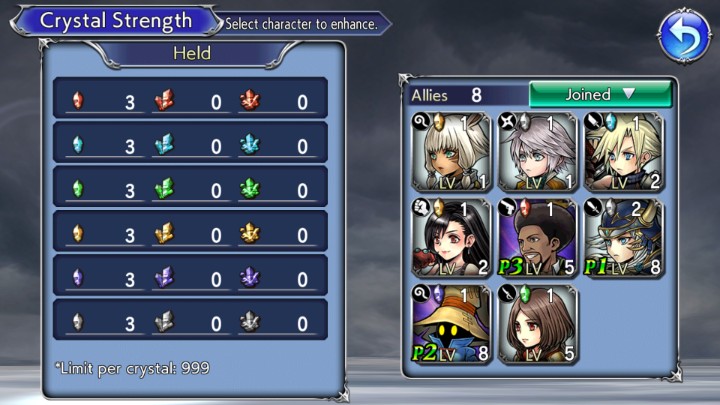
Other than weapons and armor, characters can be enhanced via a system called “Crystal Strength”, where an increase in Strength Level will grant them extra bonuses. Characters are divided into different crystal groups. To enhance a character, players must acquire their corresponding crystal color. These crystals are obtained during gameplay either via quests or as extra rewards. This adds another layer of customizability for the game’s characters.
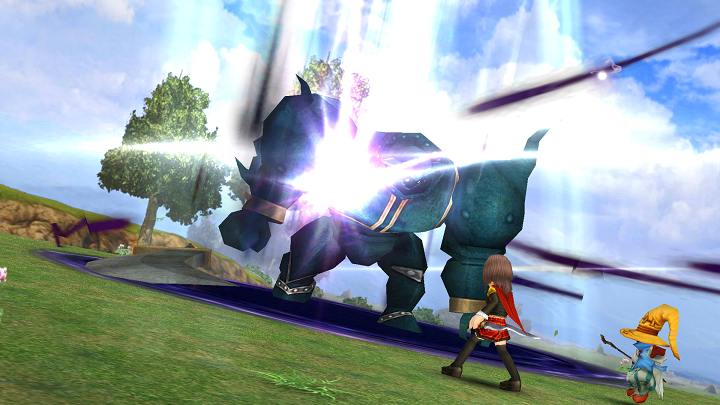
Dissidia Final Fantasy Opera Omnia is breath of fresh air for the franchise. It’s a very chill game that requires strategy rather than fast-paced thinking but is still enjoyable despite the slower pace. Combat is familiar and engaging although the bravery system might not be for everyone especially those accustomed to straightforward combat. The Gacha system too could be a bit of a turn off to some.
Either way, it offers a lot of customization, good gameplay and is very rewarding to its players. The game also blends old and new mechanics in such a manner that it comes out as a weird but good tasting pie. It certainly has the potential to be a great game, as long as Square Enix releases good updates and maintain their generous nature.

YugaTech.com is the largest and longest-running technology site in the Philippines. Originally established in October 2002, the site was transformed into a full-fledged technology platform in 2005.
How to transfer, withdraw money from PayPal to GCash
Prices of Starlink satellite in the Philippines
Install Google GBox to Huawei smartphones
Pag-IBIG MP2 online application
How to check PhilHealth contributions online
How to find your SIM card serial number
Globe, PLDT, Converge, Sky: Unli fiber internet plans compared
10 biggest games in the Google Play Store
LTO periodic medical exam for 10-year licenses
Netflix codes to unlock hidden TV shows, movies
Apple, Asus, Cherry Mobile, Huawei, LG, Nokia, Oppo, Samsung, Sony, Vivo, Xiaomi, Lenovo, Infinix Mobile, Pocophone, Honor, iPhone, OnePlus, Tecno, Realme, HTC, Gionee, Kata, IQ00, Redmi, Razer, CloudFone, Motorola, Panasonic, TCL, Wiko
Best Android smartphones between PHP 20,000 - 25,000
Smartphones under PHP 10,000 in the Philippines
Smartphones under PHP 12K Philippines
Best smartphones for kids under PHP 7,000
Smartphones under PHP 15,000 in the Philippines
Best Android smartphones between PHP 15,000 - 20,000
Smartphones under PHP 20,000 in the Philippines
Most affordable 5G phones in the Philippines under PHP 20K
5G smartphones in the Philippines under PHP 16K
Smartphone pricelist Philippines 2024
Smartphone pricelist Philippines 2023
Smartphone pricelist Philippines 2022
Smartphone pricelist Philippines 2021
Smartphone pricelist Philippines 2020
brad says:
this app crashed both on my iphone 6 plus ios 11.2.2 and ipad air 2 ios 11.1.1